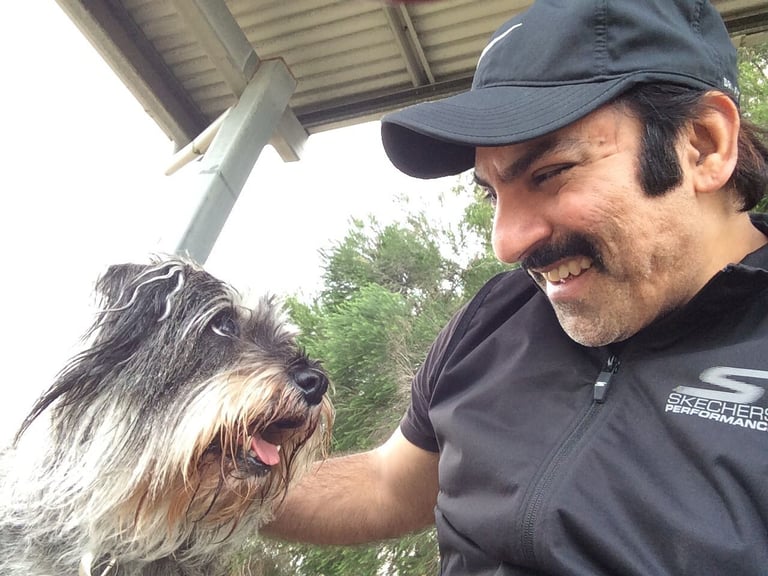The Benefits of Becoming a Good Pet Communicator
Transform your and your pet's life by understanding them better. Better communication with them helps to increase their life span according to some studies.
Sunny Mann
2/4/20253 min read


Understanding Pet Communication
Most animals become an integral part of our lives for many years which could even be two to three decades or longer based on the animal and its health. It is a long time together and how awful would it be when you are unable to understand them. Most animals are very clever and will communicate rather clearly but can we understand all that they are trying to communicate. Becoming a proficient pet communicator can significantly enhance the relationship between an owner and their animal. Effective communication with pets not only fosters trust but also helps in understanding their needs better. Pets, like humans, have emotions and ways of expressing themselves, and learning to interpret these signals is vital for a harmonious bond. Life becomes truly worthy when all are in synergy.
How Pet Communication Affects Behavioral Issues
When owners become attuned to their pets' communications, they can identify problems before they escalate. For instance, recognizing subtle signs of anxiety or discomfort in a dog can lead to timely interventions, such as changing the environment or addressing specific triggers. This proactive approach can prevent behavioral issues from becoming problematic, ensuring a better quality of life for the pet. Furthermore, understanding communication dynamics aids in training, as it allows owners to reinforce positive behaviors effectively.
Strengthening the Bond Between Pets and Owners
Improved communication creates a strong emotional bond between pets and their owners. Owners who invest time in learning how to understand their pets often experience a more fulfilling relationship. This type of engagement not only benefits the pet's emotional wellbeing but also enhances the owner's experience, turning the owner into an empathetic caregiver. As the communication deepens, the trust grows, leading to a more satisfying companionship where both parties feel valued and understood.
In conclusion, the journey towards becoming a good pet communicator is valuable for both animals and their owners. By prioritizing understanding through communication, the quality of life for pets is improved, and owners can find joy in a deeper connection with their beloved companions.
Understanding pet communication involves learning how animals express themselves through body language, vocalizations, and behavior. Since pets cannot use words like humans, they rely on other signals to convey their emotions, needs, and intentions. Here’s a breakdown of how some pets communicate and how to interpret their signals effectively.
1. Understanding Dog Communication 🐶
Body Language:
Tail Wagging:
Fast wagging with a relaxed body = Excitement and happiness
Slow wagging or stiff tail = Uncertainty or alertness
Tucked tail = Fear or submission
Ears:
Forward and erect = Alert, curious, or excited
Pinned back = Fear, anxiety, or submission
Posture:
Relaxed body = Comfortable and at ease
Stiff body with raised hackles = Aggression or fear
Play bow (front down, back up) = Invitation to play
Vocalizations:
Barking: Excitement, alertness, or warning
Growling: Warning or discomfort
Whining: Anxiety, seeking attention, or discomfort
Howling: Communication with other dogs or response to certain sounds
Facial Expressions:
Yawning: Stress or anxiety (not just tiredness)
Lip licking: Nervousness or submission
Showing teeth: A sign of aggression or play (context matters)
2. Understanding Cat Communication 🐱
Body Language:
Tail:
Straight up = Happy and confident
Flicking = Irritated or playful
Puffing up = Scared or defensive
Ears:
Forward = Curious or content
Backward or flattened = Angry or afraid
Vocalizations:
Meowing: Cats meow mainly to communicate with humans, not other cats
Purring: Contentment or, in some cases, self-soothing during stress
Hissing/Growling: Fear, aggression, or discomfort
Eyes:
Slow blinking: Trust and affection
Dilated pupils: Excitement, fear, or aggression
3. Understanding Rabbit Communication 🐰
Body Language:
Lying down with legs stretched out: Relaxed and comfortable
Thumping hind legs: Warning of danger
Binky (jumping and twisting in the air): Excitement and happiness
Vocalizations:
Soft purring (grinding teeth lightly): Contentment
Loud teeth grinding: Pain or discomfort
Whimpering: Fear or distress
4. Understanding Bird Communication 🦜
Body Language:
Fluffing feathers: Comfort or trying to stay warm
Head bobbing: Excitement or begging for food
Ruffled feathers with a lowered head: Requesting petting
Vocalizations:
Chirping and singing: Happiness and contentment
Screeching: Stress, fear, or calling for attention
Clicking beak: Contentment or self-soothing
5. Understanding Guinea Pig Communication 🐹
Body Language:
Popcorning (jumping up and down): Excitement and happiness
Flattening body and staying still: Fear or submission
Vocalizations:
Wheeking: Excitement or requesting food
Purring: Contentment (low purr) or annoyance (high purr)
Teeth chattering: Aggression or warning
Tips to Improve Pet Communication
Observe their body language and patterns. Each pet has unique habits and expressions.
Pay attention to vocal cues. Some sounds indicate happiness, while others signal distress.
Respect their signals. If a pet shows discomfort, don’t force interaction.
Be consistent in training. Use the same commands and rewards to reinforce behavior.
Use positive reinforcement. Reward good behavior with treats, praise, or playtime.
Create a safe and trusting environment. Pets communicate better when they feel secure.
Contacts
Email: talk2pets25@gmail.com
Socials
Subscribe to our newsletter for special offers and news
Mobile: +61 433 456 790
Disclaimer
Sunny is an animal communicator and energy healer and not a doctor or veterinarian. The information provided isn’t a substitute for veterinary care/medical care, a diagnosis, or advice from a specialist. Please continue to consult relevant professionals/specialists as deemed necessary.
There are no guarantees and no refunds. Please schedule with care.
